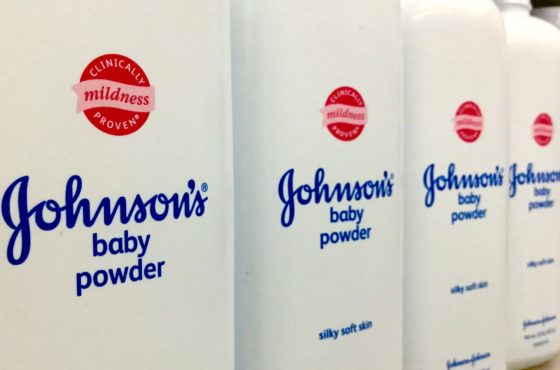According to a recent report, at least nine popular fertilizers were found to contain concerning levels of potentially harmful PFAS chemicals, also known as ”forever chemicals”.
However, these toxic per- and polyfluoroalkyl substances (PFAS) are not only exclusive to these products. Recent studies have also found these harmful chemicals in everyday products, including cosmetics, food packaging, drinking water, and even breastmilk.
Aside from literally existing everywhere, another bad thing about forever chemicals is that they have been linked in early research to cancer, negative impacts on the immune system, reproductive harm, and other adverse health effects.
To gauge the potential harm these substances can cause, this article will discuss:
- What forever chemicals are
- The health risks associated with them
- Research linking PFAS exposure to adverse health effects in humans
What are Forever Chemicals?
PFAS chemicals got their moniker, “forever chemicals,” from the fact that they are extremely persistent in the environment. They do not break down under typical environmental conditions, and can even last for thousands of years.
PFAS compounds have been around since the 1940s and are widely used in several industries because they are heat, oil, and water-resistant, making them useful for a plethora of everyday items.
However, the property that makes them so useful also enables them to stick around in the environment for extended periods of time — which, considering the adverse health effects linked to them — can be a bad thing.
Report Finds PFAS in Nine Home Fertilizers
A new study published in the Ecology Center and the Sierra Club found that some common garden fertilizers made from sewage waste contain excessive levels of PFAS compounds.
The nine fertilizers that were tested in the report all contain biosolids, which are sewage sludge resulting from wastewater treatment. Biosolids are often tested for biological contaminants, but not for PFAS.
According to the report, one of the ways that these substances can make their way to the environment is through wastewater. This is because most companies in the U.S. are not prevented from flushing wastewater that contains PFAS into treatment plants.
These wastewater treatment plants, however, do not check for these chemicals, which then end up adhering to sewage sludge.
Sewage sludge is often used as fertilizer in agricultural settings because they contain nutrients like nitrogen. However, they can also end up in some home fertilizers, as found by the research.
And using these fertilizers that were found to contain PFAS on the soil where we grow food means that some amount of those harmful chemicals will get in the soil, get absorbed by plants, and be eaten by humans, who are potential victims of its health impacts.
But PFAS chemicals are far from being the only substances found in fertilizers or other compounds used in agriculture that can be harmful to humans.
In fact:
A widely used herbicide sold under the brand name paraquat has been linked to an increased risk of developing Parkinson’s disease. A number of studies found that some of its active ingredients can negatively affect nerve cells in the brain by acting through a mechanism called oxidative stress, which is also suspected to contribute to dopamine cell degeneration in Parkinson’s.
This association eventually led to plaintiffs filing paraquat lawsuits, after they have been exposed to the pesticide in their workplace and later on developed Parkinson’s.
The report from the environmental nonprofit Ecology Center and the Sierra Club tested nine garden fertilizers sold by major retailers, including The Home Depot, Lowe’s, and Ace Hardware.
The affected fertilizers purchased from eight states and the District of Columbia were:
- Pro Care All Natural Fertilizer
- Cured BLOOM Soil Conditioner
- TAGRO Mix
- Ecoscraps Slow Release Fertilizer
- Milorganite 6-4-0 Fertilizer
- Menards Premium Natural Fertilizer
- GreenEdge Slow Release Fertilizer
- Earthlife Natural Fertilizer
- Synagro Granulite Fertilizer Pellets
Notice how manufacturers use a lot of the word “natural” for these products to make it seem like they’re all eco-friendly.
The researchers tested the fertilizers for 33 PFAS substances and found 24 of these in at least one product. Moreover, around 14 to 20 different PFAS chemicals were found in every fertilizer.
What’s more concerning is that eight of the nine products were found to contain PFAS levels that exceed the limit set in Maine, the U.S. state that currently has the toughest regulations for PFAS concentration.
These PFAS levels being used in gardens are not only of great concern to home gardeners but also to their families. These individuals are also at risk of being exposed to these potentially toxic chemicals linked to health problems such as birth defects, cancer, and liver disease.
With this, the authors of the study called for changes to get rid of PFAS in the environment. These include:
- Limiting PFAS use with rare exceptions
- Preventing companies that use PFAS from disposing of the chemicals in wastewater
- Studying the harmful effects of using contaminated sewage in agriculture and setting regulatory guidelines
- Obliging PFAS polluters to pay for the damages they have done
Health Risks Associated with PFAS
PFAS might as well be called everywhere chemicals, as they can be found almost anywhere around us. These man-made chemicals are commonly found in nonstick cookware, stain-resistant fabric coatings, cleaning products, and paints.
In fact:
PFAS are so widely used that a 2015 study by the Centers for Disease Control and Prevention (CDC) found that around 97 percent of Americans have PFAS in their blood.
This brings us to yet another reason why PFAS are also referred to as “forever chemicals” — aside from staying in the environment for decades, they also have the ability to accumulate in our bodies.
In 2013, the federal government ordered several public water systems with more than 10,000 customers to test for PFAS. In the next two years, the Environmental Protection Agency (EPA) found high levels of PFAS in public water supplies in 33 states.
As of January 2021, according to a food advocacy organization called The Environmental Working Group, there are thousands of documented cases of PFAS contamination in 49 states across the country.
These open up the possibility of more people being at risk of exposure to the potentially toxic PFAS. According to the Agency for Toxic Substances and Disease Registry, individuals can be exposed to these chemicals by:
- drinking water contaminated with PFAS
- eating fish caught from contaminated waters
- eating food packaged with PFAS-containing materials
- swallowing contaminated soil
To this day, experts are still learning about the health risks of PFAS, but mounting evidence suggests that they may pose serious health problems to humans, including birth defects, hormone disruption, liver and thyroid disease, and other serious risks to human health.
One CDC review found that exposure to high levels of PFAS is associated with cancer, reproductive problems, liver damage, as well as an increased risk of asthma and thyroid disease.
Research: Forever Chemicals Common in Cosmetics
Research conducted by researchers at the University of Notre Dame found that almost half of more than 200 cosmetic products tested in a study contained high levels of PFAS.
Some products that were tested include lipstick, foundation, and mascara.
What’s worse?
88 percent of the products tested failed to inform consumers of the materials found in the cosmetics through their product labels.
And although the U.S. Food and Drug Administration (FDA) regulates personal care products, the regulating agency does not assess or approve their ingredients for safety.
But this is not to say that FDA does not require companies to disclose all materials or ingredients present in their products, because the agency technically requires that of manufacturers. However, several loopholes in the system allowed companies to not fully disclose all ingredients used in the product labels.
Is Something Being Done?
With the widespread use of PFAS and thousands of these chemicals potentially out in the environment and limited information on its health risks, it’s extremely hard to come up with a single acceptable level of exposure.
The EPA only set a lifetime health advisory for PFOA and PFOS, suggesting that levels of these substances in drinking water should not be more than 70 parts per trillion. However, this advisory isn’t a federal regulation.
Past efforts that attempted to manage the chemicals have also failed in Congress. In 2019, a group of Senators introduced legislation to mandate that the EPA declare these chemicals as “hazardous substances” under the Superfund law. It passed in the House 247-159, but then-President Donald Trump threatened to veto the bill and said such legislation would “impose substantial costs” on water systems and government agencies.
During his campaign, President Biden vowed to tackle PFAS pollution by declaring PFAS a hazardous substance and setting federal maximum limits for PFAS in the Safe Drinking Water Act.
Earlier this year, the Biden administration announced its plans to regulate the chemicals in drinking water, though its details have not yet been made public. In February, the EPA also reproposed rules to collect new data on PFAS levels in drinking water.
Experts have also been demanding federal action on this issue for years. In 2015, more than 200 scientists signed a letter asking governments to only require essential uses of PFAS and regulate manufacturers of products that use the chemicals.
Although some steps are being taken towards better management of the so-called forever chemicals, there is still much that needs to be done to regulate its widespread use and implement stricter regulations, and possibly set limits on its acceptable levels.



